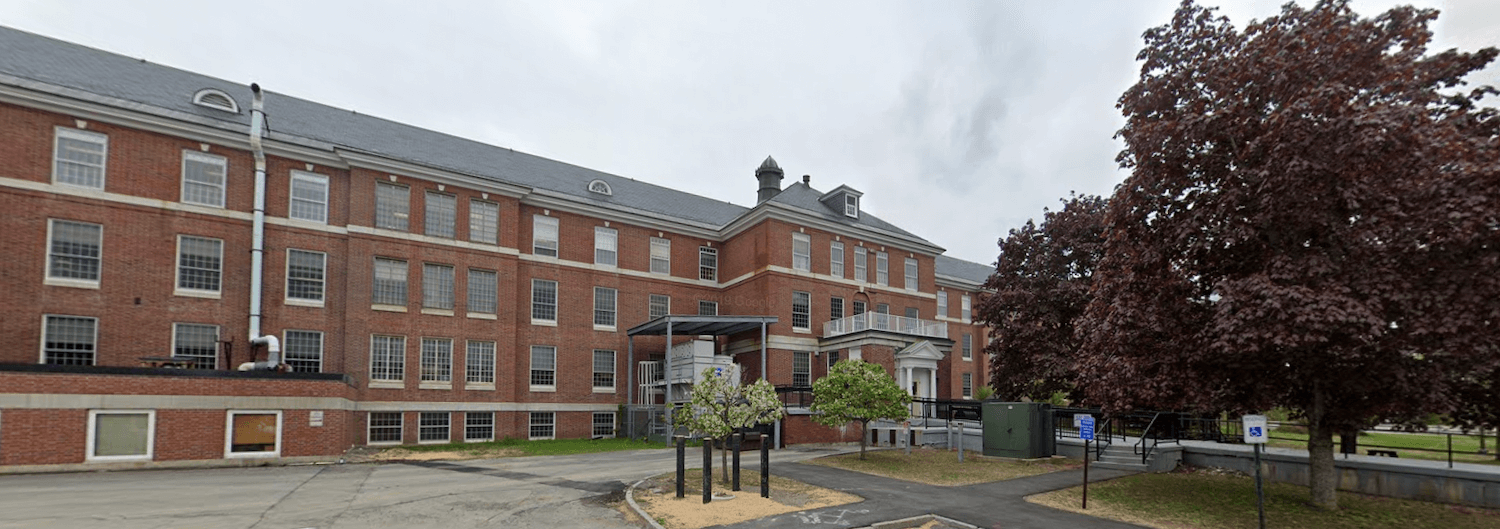Editor’s note: ImpactAlpha has partnered with HIP Investor to highlight upcoming bond issues with social and/or environmental significance. Disclaimer: Nothing in this post or on ImpactAlpha.com shall constitute an offer to sell or solicitation of an offer to buy bonds.
- CUSIP bond identifier: 64987JG88
- Issuer: New York State Housing Finance Agency
- Impact entity rated by HIP: New York Housing Agency
- Muni sector: Housing
- Closing date: June 29, 2023
- Bond amount: $307.4 million
- HIP Impact Rating: 65.7% connoting “net positive” (higher than 50 on 100-point scale)
- Opportunity Zones located in the issuing entity: 514 zones, covering 2.04 million citizens (of 19.3 million citizens in New York)
- UN SDG Ratings by HIP:
Goal 1 – No Poverty: 50.9%
Goal 7 – Affordable and Clean Energy: 54.2%
Goal 11 – Sustainable Cities and Communities: 54.2%
New York Sustainability Bond
The New York State Housing Finance Agency has issued a sustainability bond to finance the 2023 mortgage loans for the construction, acquisition or rehabilitation of several multi-family rental housing projects. Specifically, 6 loans will fund the new construction or rehabilitation of 6 affordable housing developments located in Bronx, Erie, Kings, Suffolk, and Westchester counties. These developments are expected to create or preserve 971 units in the aggregate of affordable housing units.
The projects financed from the Bond will benefit from 8 subsidy programs across 3 categories of affordable housing: inclusivity, climate action, and poverty reduction.
- INCLUSIVE HOUSING
- New York State Office for People With Developmental Disabilities: provides financing for the construction or adaptive reuse of a non-residential property for rental supportive housing with on-site social services and rental subsidies;
- New York State Office for People With Developmental Disabilities: provides financing for the construction or adaptive reuse of a non-residential property for rental supportive housing with on-site social services and rental subsidies;
- CLIMATE ACTION
- Clean Energy Initiative Program: provides finance for the construction, adaptive reuse, or preservation of multifamily rental housing to enable projects to achieve the sustainability standards;
- Clean Energy Initiative Program: provides finance for the construction, adaptive reuse, or preservation of multifamily rental housing to enable projects to achieve the sustainability standards;
- POVERTY
- Federal Housing Trust Fund: provides finance for the construction of residential multifamily rental housing that includes units to be occupied by households with incomes up to 30% of Area Median Income (AMI).
- New York State Empire State Supportive Housing Initiative: provides operational rental and service subsidies for affordable supportive housing;
- New Construction Program: provides financing for the construction or adaptive reuse of multifamily rental housing, advancing priorities such as redevelopment of state or municipally-owned sites, or family housing in high performing school districts;
- NYC Department of Housing and Preservation Development, Supportive Housing Loan Program: provides low-interest loans to support the development of permanent supportive housing with on-site social services;
- Supportive Housing Opportunity Program: provides financing for the construction or adaptive reuse of a non-residential property to rental supportive housing with on-site social services;
The Bond has been designated as a Sustainability Bond based on its intended use of proceeds to finance multi-family rental housing projects to provide affordable housing and to include energy efficiency standards and features. These features include insulation, windows and doors, heating and cooling equipment, lighting and certain appliances designed to meet prescribed targets of energy consumption performance levels.
The bond designation is consistent with the International Capital Market Association’s (ICMA) Green Bond Principles and Social Bond Principles. Moreover, the Bond aligns with the UN SDG 1 (Goal: No Poverty), UN SDG 7 (Goal: Affordable and Clean Energy) and UN SDG 11 (Goal: Sustainable Cities and Communities) of the 17 UN Sustainable Development Goals.
HIP impact analysis
New York challenged by the scale of housing unaffordability. The reality of the New York housing rental market touches upon three problems. First, poverty rates in New York have been surpassing the national average consistently since 2014. As of December 2022, an estimated 2.7 million of over 19.3 million (or 13.9%) New Yorkers live in poverty. Most of them are children, female heads of households, Black, Hispanic, American Indian and Pacific Islanders, people with disabilities, and those with less than a high school education.
Second, the population affected by poverty is continuously challenged by the growing prices of rental housing. Back in 2019 the median monthly gross rent as a fraction of the median household in New York was 21.8%. But this ratio has skyrocketed since then and peaks in large cities, such as New York City, where it currently stands at 68.5%. This is more than double the national average of 30%. Thus, for many households, especially those disadvantaged, finding affordable shelter can become “mission impossible”.
Third, lack of ability to afford housing rental puts New Yorkers at risk of homelessness, which has been on the rise since 2017 across the entire USA, experiencing an overall increase of 6%. New York has the second-highest homeless population among all US states. With 15.7% of the nation’s homelessness, New York State has 91,271 homeless people. Scaling that number per 100,000 population, the “Empire State” tops the list.
The homeless represent roughly 0.5% of the entire state population, but almost three-quarters live in New York City (67,150 people). Trends in homelessness in New York State over the past years show an increase by 39% compared to 10 years ago, and the number of homeless single adults is 112% higher than it was 10 years ago. Research confirms that the primary cause of homelessness, particularly among families, is lack of affordable housing.
Affordable housing
The New York Housing Finance Agency (NY HFA) has been actively tackling the pressing issue of housing affordability in the state. Through its initiatives and programs, NY HFA aims to provide safe, decent, and affordable housing options for low-to moderate-income individuals and families. The Agency has made significant strides in achieving this goal by financing affordable housing developments, partnering with private developers, and allocating tax-exempt bonds to fund the construction and preservation of affordable housing units.
NY HFA also collaborates with local municipalities and housing organizations to implement innovative solutions such as mixed-income developments and supportive housing for vulnerable populations. By effectively leveraging public-private partnerships and deploying financial resources strategically, the NY HFA has made substantial progress in improving the quality of life for many individuals and fostering inclusive communities.
Just last month, $875 million in financing was awarded through bonds, tax credits, and subsidies to create or preserve 3,100 affordable, sustainable, and supportive homes in 27 developments across the state. When coupled with additional private funding and resources, the 27 projects receiving funding are expected to create more than $1.5 billion in overall investment.
The NY HFA takes the responsibility in managing and implementing those projects with a goal to increase housing supply, assist local economic development efforts, fight homelessness, and advance New York State’s climate goals.
“Carbon-neutral” buildings
On top of the Bond’s expected high impact for more affordable housing, the bond also aligns with New York’s Carbon Neutral Buildings Roadmap. Currently, direct emissions from buildings account for over 30% of greenhouse gas (GHG) emissions in NY State (driven mostly by fossil fuel-based heating of spaces and hot water). Add in emissions attributable to generating the electricity used in buildings, the GHG share increases to over 40%.
Decarbonizing buildings is a pivotal step to meet the State’s mandate to reduce its economy-wide GHG emissions by 85% by 2050. The Bond prioritizes these goals by including energy efficiency features in the projects in funds. Eligible buildings are set to meet the standards under one of two ENERGYSTAR® certification programs of the US Environmental Protection Agency (EPA).
Impact of the NY HFA
HIP measures the impact of housing agencies across 23 material metrics, which aggregate into 5 pillars: Health, Wealth, Earth, Equality, and Trust. In the Housing Sector, the most material pillars are Equality (32% weight of the HIP Overall Rating) and Health (28% of the HIP Overall Rating). Within those 2 high impact pillars, the most material metrics are “Household income to Area Median Income”, “Subsidized Unit Accessibility” (which measures the ratio of the percent of subsidized rental units to the percent of the local area below the poverty line) as well as metrics measuring residents’ proximity to Hazardous Waste Facilities and to Major Direct Discharges of Water – as well as proximity to grocery stores.
New York Housing Agency’s Overall HIP Rating of 65.7% places the Agency well beyond its peers, whose impact rating averages at 52%, adjusting for the population served. The Agency grades high in Equality with a top-quintile rating of 82% and a top-third rating in Health of 65%. New York’s “Transportation Affordability” benefits from the transit networks, availability of buses and trains (Commute Mode), and the Agency’s “Reporting and Transparency”, a governance-related metric; all rate above-average to national norms.
The NY HFA also rates high against its housing agency sector peers on the impact metrics in three of the United Nations Sustainable Development Goals:
Ripple effects
By providing financial resources, incentives, and support to development and communities, the NY HFA can stimulate the construction of affordable housing units, thereby increasing the availability of safe and affordable homes for low- and middle-income individuals and families. This initiative not only helps to alleviate the housing crisis, but it also promotes economic growth by generating jobs in the construction industry and fostering community development.
Additionally, improved access to affordable housing can contribute to enhanced social equity and stability, as families and individuals are better able to establish roots, access educational opportunities, and participate actively in their communities.
Energy efficiency features that contribute to the State’s environmental sustainability roadmap can also lead to new reductions in energy consumption, which translates into lower electricity and heating costs for residents. This, in turn, can alleviate the financial burden of low-income households and potentially decrease energy poverty. These energy efficiency aspects can additionally stimulate the local economy, as they often create employment opportunities for skilled labor, can spur innovation, and create new business opportunities in the clean energy sector.
“Net positive”
There are several compelling reasons for investors to consider this bond. A combination of affordable housing and energy efficiency addresses pressing societal needs. On top of that, energy efficiency can contribute to cost savings and reduced operational expenses, which increases the financial viability for the residents. HIP Ratings observe NY HFA’s ongoing efforts to improve social and environmental metrics, as well as high transparency and reliability. Therefore, this Bond is a unique opportunity for impact-focused investors to pursue accelerated impact in environmental, social, and governance benefits.
Anna Rautenberg is an ESG Impact Investing Analyst with HIP Investor Ratings LLC.
HIP Investor Inc. is a state-registered investment adviser in several jurisdictions, and HIP Investor Ratings LLC is an impact-ratings firm evaluating impact and ESG on 123,000 municipal entities, 250,000 muni-bond issuances, and 12,000 corporates for equities and bonds. HIP Impact Ratings are for your information and education – and are not intended to be investment recommendations. Past performance is not indicative of future results. All investments are risky and could lose value. Please consult your investment professionals to evaluate if any investment is appropriate for you, your goals, and your risk-return-impact profile.











